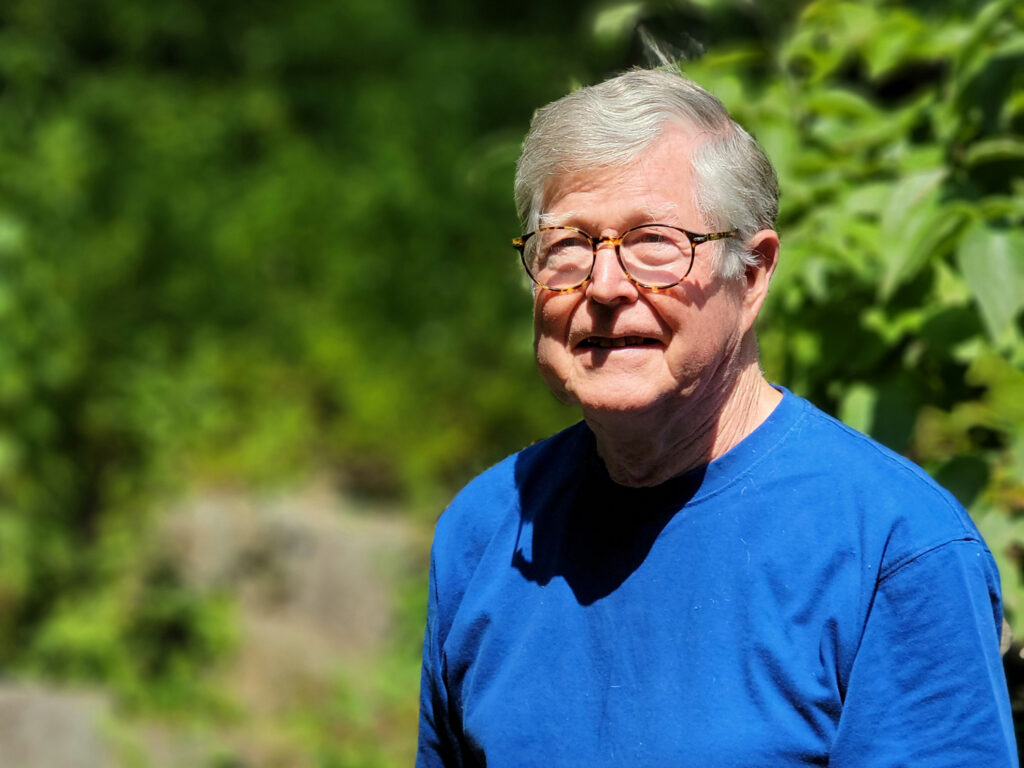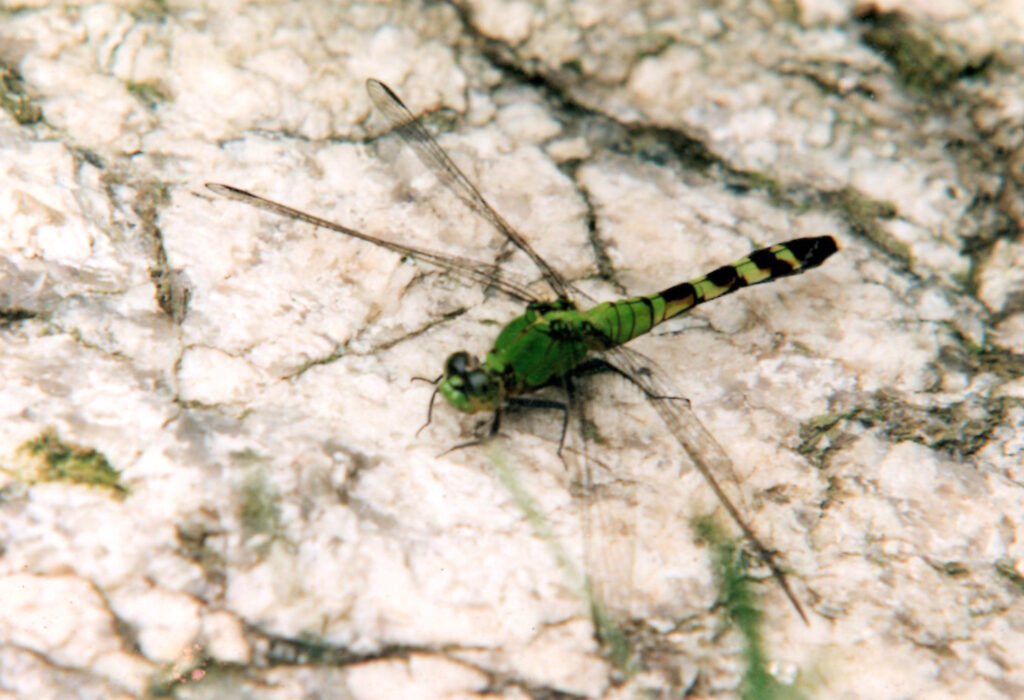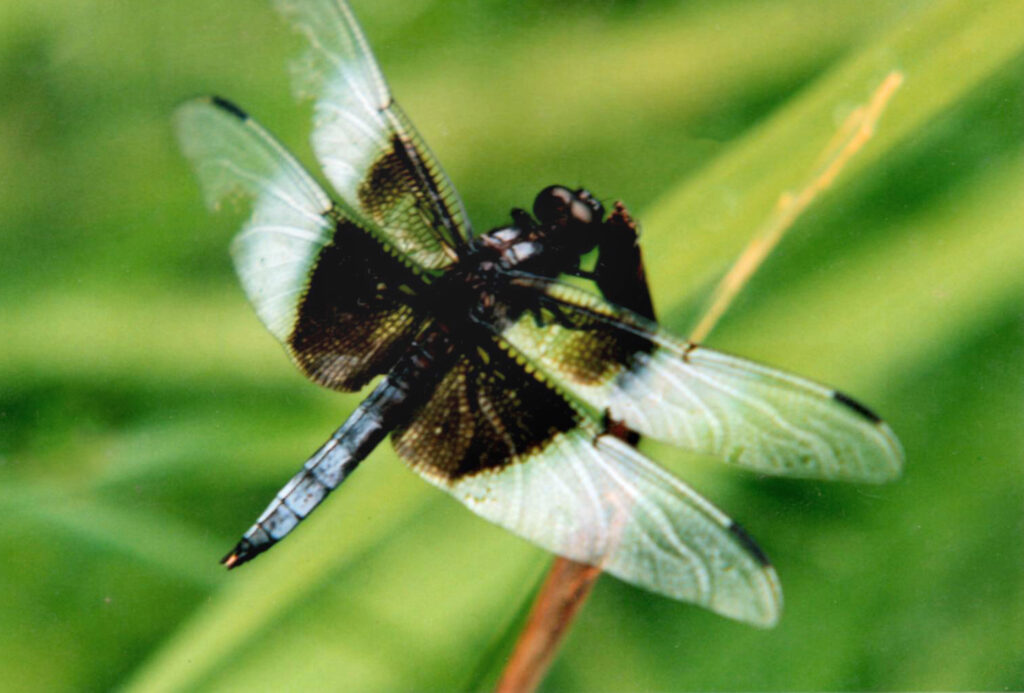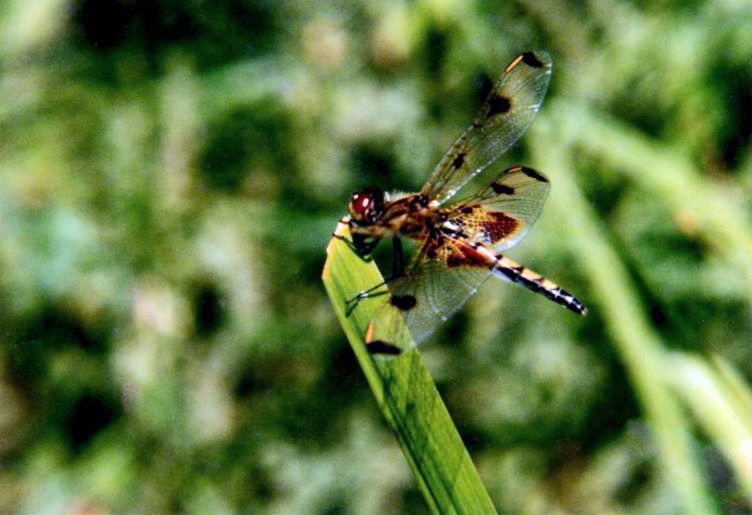Redding and Highstead have been fortunate that John McLeran grew up on a New York State dairy farm, right next door to an elementary school environmental education teacher. “I was absolutely fascinated because he opened up doors to me by teaching me how to identify birds by sight and by their songs. By the time I was twelve, I could name pretty much any bird by its song. He put me in that direction, and I’ve steered there ever since.”
Serendipity also brought John to Highstead some 25 years ago, where he has been participating in a range of projects, including forest monitoring and conducting a survey of Highstead’s abundant dragonfly population. Asked why he ended up at Highstead, he explains, “Basically, as a great explorer once said, because it’s there…If it wasn’t Highstead, I would search out any environmental organization just to see what’s there and what’s going on.”
“I think some people are just wired to want to be outdoors and have a natural fascination. I am enamored by just about everything I see and hear and smell that’s outside my front door.”
John McLeran
A Lifetime of Community Science

Without a formal environmental background except high school biology and a college major in English and American Literature, John seems an unlikely candidate to spend a lifetime exploring the environment and its many inhabitants. “I went to a very environmentally-oriented college, a little college called Middlebury up in Vermont,” he says. “I think some people are just wired to want to be outdoors and have a natural fascination. I am enamored by just about everything I see and hear and smell that’s outside my front door. And I always want to know, ‘why is it here?’ ‘How is it interacting with everything else in my yard?’ So, I don’t have to go far to find motivation.”
Summers Seeking Dragonflies
With summer’s peak unfolding around Highstead, you’ll see dragonflies everywhere. You just have to look for them. In the insect world, butterflies may be one of the most familiar and common insects, but dragonflies are a close contender. “And there is a lot to know. There has been a great deal of research, especially on dragonfly flight patterns.”
As a biodiversity hotspot, the northeastern United States is buzzing with dragonfly species, with over 180 in New England alone. This season marks John’s eleventh summer seeking dragonflies as part of an ongoing population study in partnership with Highstead’s senior ecologist, Ed Faison. John describes his fieldwork process, “I visit Highstead four times a summer, usually for about 2 to 2.5 hours in the barn meadow, down to the pond, around the pond, and then back on the boardwalk going into the woods.”



Species diversity, reappearances or disappearances, date, time, weather, and location are all tracked in a spreadsheet for documentation while following Highstead’s protocols. “I don’t catch the dragonflies. In most cases, I can identify down to the species; some I can’t. I’d have to have it in hand and look at it in a magnifying glass or a microscope.”
As a means toward identification, John also observes dragonfly behaviors including flight patterns, wing position, and perching position. “Some are perchers and only fly up to catch prey, while some hang from a branch, or perch on the highest standing dead plant.”
So far, John has witnessed 29 different dragonfly species, “And there are probably another half dozen that I’ve seen but haven’t been able to identify.”
The dragonfly inventory contributes to Highstead’s ongoing research about the ecological health of systems across the landscape. As bioindicators, dragonflies and other members of the Odonata order (dragonflies, damselflies, etc.) can tell us about freshwater ecosystem integrity and changes in the ecosystem over time. Some commonly observed species include eastern pondhawk, clubtail, swamp spreadwing, and blue dasher. “And others are elusive—the common whitetail is on virtually every pond around here. For years I wasn’t seeing it at Highstead, and then all of a sudden, I think three years ago, it started to appear, and now it has become common to this pond.”
As insectivores, Highstead’s dragonflies live off a diet mostly consisting of mosquitos and midges, but will also eat butterflies, moths, bees, and other dragonflies. “When people say, ‘Talk to me more about your work with pollinators,’ and then, ‘Well, how about dragonflies?’ It’s always a little bit embarrassing because dragonflies are probably the fiercest pollinator eaters around. To my knowledge, I’ve never read that they’re involved in the pollination process.”

The Thrill of the Unexpected
John’s approach to science and collaboration at Highstead speaks to the organization’s guiding mission, “inspiring curiosity and building knowledge about plants and wooded landscapes.” When asked if he has learned anything new or unexpected, he quickly answers, “Well, I think just about everything. If I learned something I didn’t know before, that’s always exciting for me. I never know who’s going to appear that I’ve never seen before, or who I can’t find that was here a year or two ago. It’s exciting to know there are still species out there that I’ve not seen. So that’s always fun.”
Underlying all of John’s work is a passion to encourage people to spend time outdoors. And it’s more than the potential for finding dragonflies and making discoveries out your door. “I think in this day and age, if you grow up looking at a screen, and you’re indoors 95% of the time, I can see how it would be difficult to find a kinship with what’s outside your front door.” After a career in leading environmental education centers, John continues. “My great hope is, reach as many as you can as often as you can, and then maybe that’s the best you can do.”
When he’s not chasing dragonflies, John serves as the Open Space Manager for the town of Redding and the Redding Land Trust. Highstead’s neighbor and partner, New Pond Farm Education Center, also hosts John’s dragonfly photography, and some of his specimen collections are housed at the University of Connecticut Storrs and the American Museum of Natural History.